Are you overwhelmed by the idea of spending four or more years in traditional college? Trade schools present a compelling alternative, offering a fast track to rewarding careers with significantly lower time and financial commitments. With hands-on training and specialized programs, vocational schools equip you with the skills needed for in-demand jobs, making them a smart choice for your future.
1. Cost-Effective Education Options
Trade schools, or vocational schools, offer a cost-effective alternative to traditional four-year universities, with total program costs averaging around $33,000. These institutions provide hands-on training tailored to specific careers, allowing students to gain practical skills in high-demand fields like healthcare and skilled trades. Many programs can be completed in two years or less, making them an efficient choice for those eager to enter the workforce.
Additionally, trade schools often feature flexible schedules, enabling students to work part-time while studying. With smaller class sizes, students receive personalized attention from instructors, enhancing their learning experience. Many trade schools also provide financial aid options, including scholarships and grants, which help minimize student debt. Graduates frequently enjoy competitive salaries and benefit from job placement assistance, further solidifying the value of their education.
2. Shorter Program Durations
Trade schools, or vocational schools, are designed to provide students with a more efficient path to their careers. With programs often lasting two years or less, students can quickly gain the skills needed to enter the workforce. This shorter duration appeals to those eager to start their professional journey without the lengthy commitment of traditional four-year colleges.
Many vocational schools offer certificate programs that can be completed in under a year, allowing students to acquire specialized skills rapidly. This accelerated learning model is particularly beneficial for individuals looking to change careers or enhance their qualifications in a competitive job market. The ability to gain credentials quickly can lead to faster employment opportunities.
Additionally, trade schools provide multiple start dates throughout the year, offering flexibility for students. This scheduling convenience allows individuals to begin their education when it best fits their lives, making it easier to balance work, family, and studies. The focused curriculum also means students can dive straight into their chosen field without the distraction of general education courses.
Moreover, trade schools boast higher graduation rates compared to traditional colleges, reflecting their commitment to student success. Many institutions also offer job placement assistance, helping graduates transition smoothly into the workforce. This support, combined with a targeted education, makes vocational schools an attractive option for those seeking a practical and efficient route to their career goals.
3. High-Demand Career Paths
Trade schools, or vocational schools, are increasingly recognized for their ability to equip students with practical skills for high-demand careers. With programs often completed in two years or less, students can enter the workforce quickly, minimizing the financial burden associated with traditional four-year universities. The total cost of a trade school program averages around $33,000, making it a more affordable option.
Many trade school programs focus on essential skill sets that are in high demand across various industries, such as healthcare and skilled trades like HVAC and electrical work. Graduates often find that their salaries are competitive with those of four-year college graduates, reflecting the value of their specialized training. The hands-on training provided through externships or internships further enhances their employability.
Class sizes in trade schools tend to be smaller, allowing for more personalized instruction from experienced industry professionals. This tailored approach not only fosters a deeper understanding of the material but also prepares students for real-world challenges. Additionally, many vocational schools offer dedicated job placement services, including resume writing and interview preparation, ensuring that graduates are well-equipped to enter the job market successfully.
4. Hands-On Training Experience
Hands-on training is a cornerstone of trade school education, equipping students with practical skills essential for their chosen careers. Many programs incorporate externships or internships, enabling students to gain real-world experience in their fields. This practical exposure not only enhances learning but also significantly increases employability, often resulting in job offers upon graduation.
With smaller class sizes, trade schools foster a more personalized learning environment, allowing instructors to provide tailored guidance. These educators are typically industry veterans, bringing a wealth of knowledge and experience to the classroom. By focusing on in-demand skill sets, trade schools prepare graduates for lucrative career paths, often leading to salaries comparable to those of four-year college graduates.
5. Personalized Instruction and Support
Trade schools excel in providing personalized instruction and support through smaller class sizes, enabling instructors to offer individualized attention. With industry-expert instructors and a collaborative environment, students benefit from tailored training. Additionally, dedicated career services assist with job placement and practical experience through internships, enhancing employability upon graduation.
6. Diverse Program Offerings
Trade schools provide a wide range of diverse program offerings tailored to meet the needs of various industries. With a focus on high-demand careers, these institutions equip students with practical skills and hands-on training in fields such as healthcare, skilled trades, business, and creative arts. This targeted approach ensures that graduates are well-prepared for the job market.
Many trade schools feature flexible scheduling options, including multiple start dates throughout the year, allowing students to begin their education at their convenience. Smaller class sizes foster personalized attention from experienced instructors, enhancing the learning experience. Additionally, job placement assistance services are often available, helping graduates transition smoothly into their chosen careers.
- Programs can be completed in two years or less, with some certificates available in under a year.
- Focus on high-demand careers ensures relevant skill development.
- Flexible start dates accommodate various student schedules.
- Smaller class sizes promote personalized instruction.
- Job placement assistance helps graduates secure employment.
7. Job Placement Assistance Services
Job placement assistance services are a vital component of vocational education, helping graduates transition smoothly into the workforce. These services often encompass resume writing, interview preparation, and personalized job search strategies, equipping students with essential tools to secure employment in their chosen fields. This support significantly enhances their readiness and confidence as they enter the job market.
Many trade schools recognize the importance of these services, often boasting higher graduation rates than traditional colleges. By providing dedicated job placement assistance, they ensure that graduates not only complete their programs but also find meaningful employment. This commitment to student success can be a major advantage for those seeking to advance their careers in skilled trades.
8. Focused Curriculum for Career Success
Trade schools offer a focused curriculum tailored to specific career paths, ensuring students engage only in relevant coursework. With programs often completed in two years or less, and some certificates achievable in under a year, students gain practical skills through hands-on training and internships. Smaller class sizes foster personalized instruction from industry experts, enhancing job readiness and employability.
In conclusion, trade schools present a smart choice for your future by providing practical, cost-effective, and time-efficient education. With specialized programs, hands-on training, and robust job placement services, these institutions equip you for a successful career much faster than traditional four-year degrees. If you’re eager to advance your career, trade schools are worth considering for their numerous advantages.



